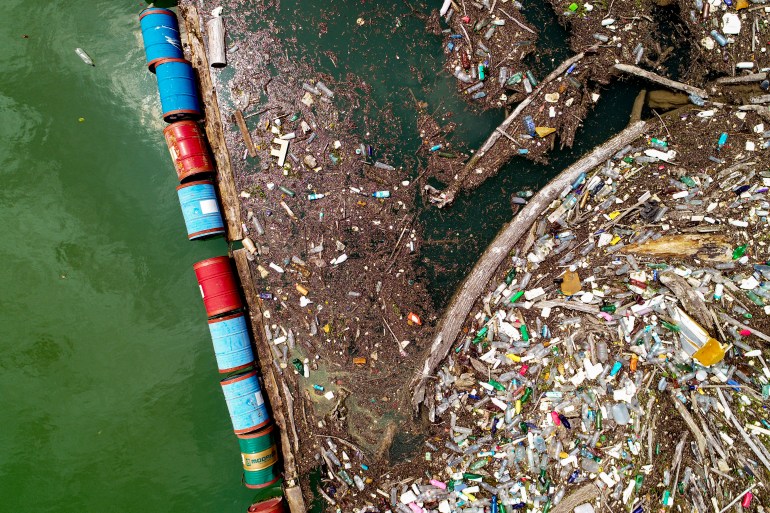World Ocean Day: How much plastic is in our oceans?
According to UNESCO, 8-10 million tonnes of plastic are released into the sea every year. On World Ocean Day, Al Jazeera visualises what that looks like.
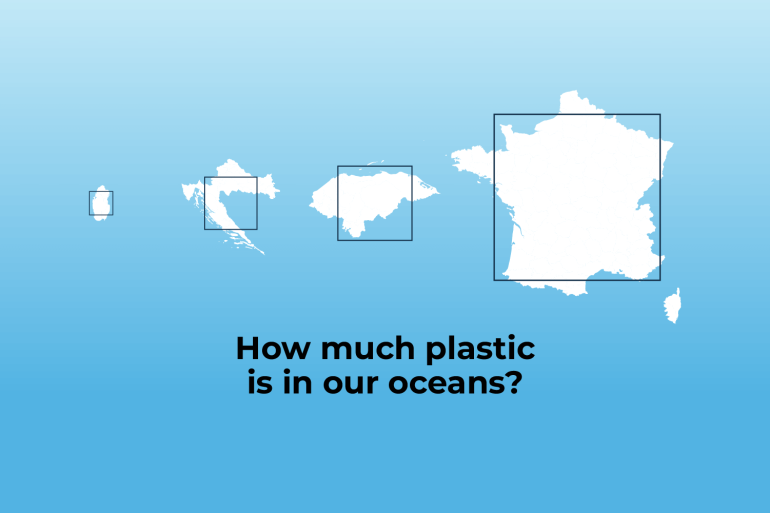
Every year, about 400 million tonnes of plastic products are produced around the world. About half are used to make single-use items such as shopping bags, cups and packaging material.
Of these plastics, an estimated 8 million to 10 million tonnes end up in the ocean each year. If flattened to the thickness of a plastic bag, that is enough to cover an area of 11,000sq km (4,250sq miles). That is about the size of small countries like Qatar, Jamaica or the Bahamas.
Keep reading
list of 4 itemsAfter the Hurricane
World’s coral reefs face global bleaching crisis
Why is Germany maintaining economic ties with China?
At this rate, over the course of 50 years, plastic waste could grow to an area bigger than 550,000sq km (212,000sq miles) – about the size of France, Thailand or Ukraine.
To raise awareness about the importance of the ocean and promote its sustainable use and protection, the United Nations designated every June 8 as World Ocean Day.
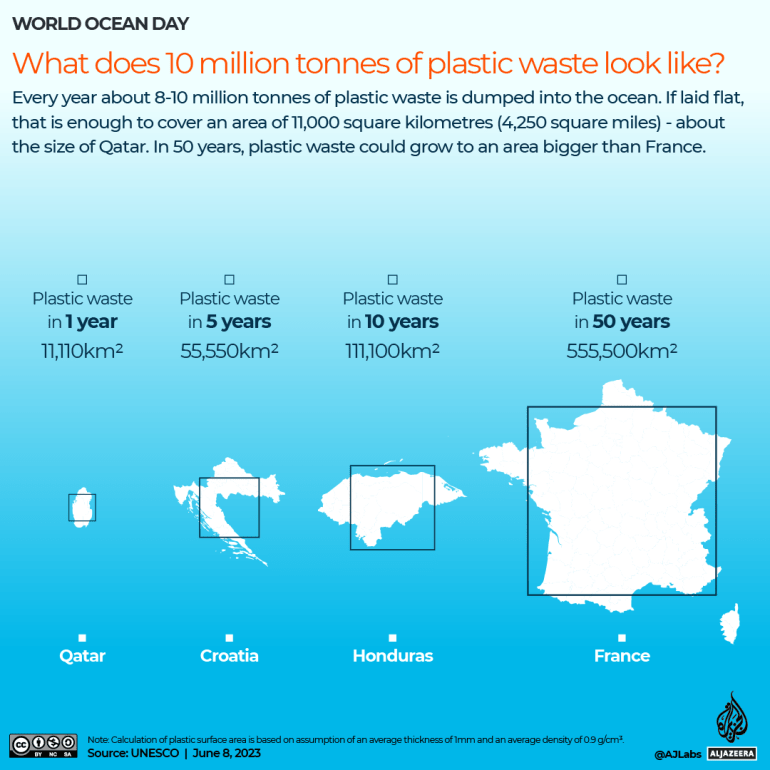
How does plastic end up in the ocean?
Plastics are the most common form of ocean litter, comprising 80 percent of all marine pollution. Most plastics that end up in the ocean come from improper waste disposal systems that dump rubbish in rivers and streams.
Plastics in the form of fishing nets and other marine equipment are also dumped into the ocean by ships and fishing boats.
Besides plastic bags and containers, tiny particles known as microplastics also make their way into the ocean. Microplastics, which are less than 5mm (one-fifth of an inch) in length, are a major environmental concern because they can be ingested by marine life and cause harm to both animals and humans.
An estimated 50 trillion to 75 trillion pieces of microplastics are in the ocean today.
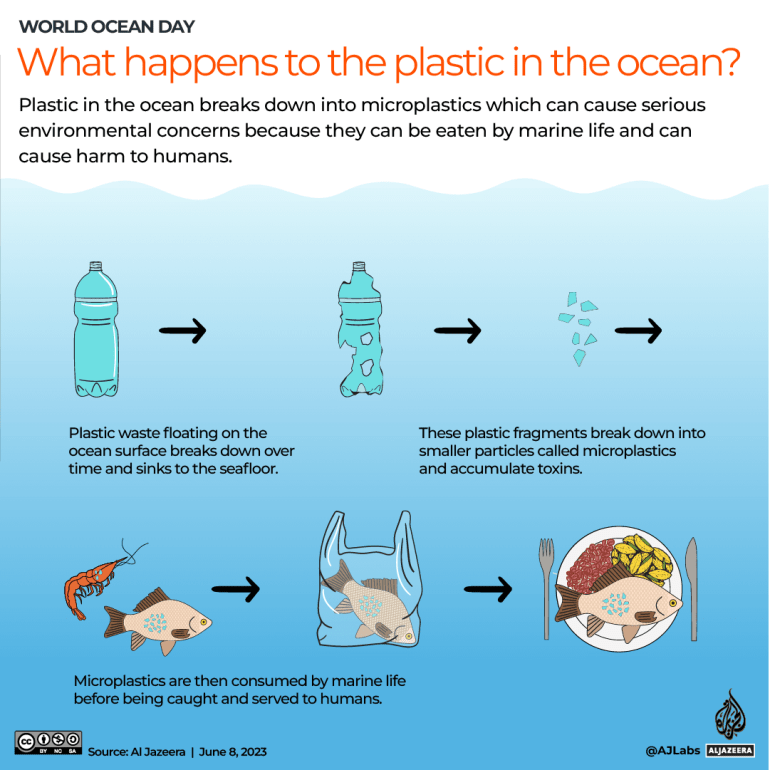
While research on the health effects of human consumption of microplastics is limited, some studies have indicated that microplastics can accumulate in organs such as the liver, kidneys and intestines. There are concerns that microplastic particles could potentially lead to inflammation, oxidative stress and cellular damage.
“These little particles in the ocean were breaking into little pieces and being consumed by the wildlife living there at an almost unimaginable scale. The main problem is that pieces of plastic contain toxic chemicals and these chemicals are already known to interfere with human hormones and animal hormones. They may cause the accumulation of toxins in the body that may lead to ill effects over time,” science writer and author Erica Cirino told Al Jazeera’s The Stream programme.
Which countries are the source of the most plastic in the ocean?
According to a 2021 study published by Science Advances research, 80 percent of all plastics found in the ocean comes from Asia.
The Philippines is believed to be the source of more than a third (36.4 percent) of all plastic waste in the ocean followed by India (12.9 percent), Malaysia (7.5 percent), China (7.2 percent) and Indonesia (5.8 percent).
These amounts do not include waste that is exported overseas that may be at higher risk of entering the ocean.
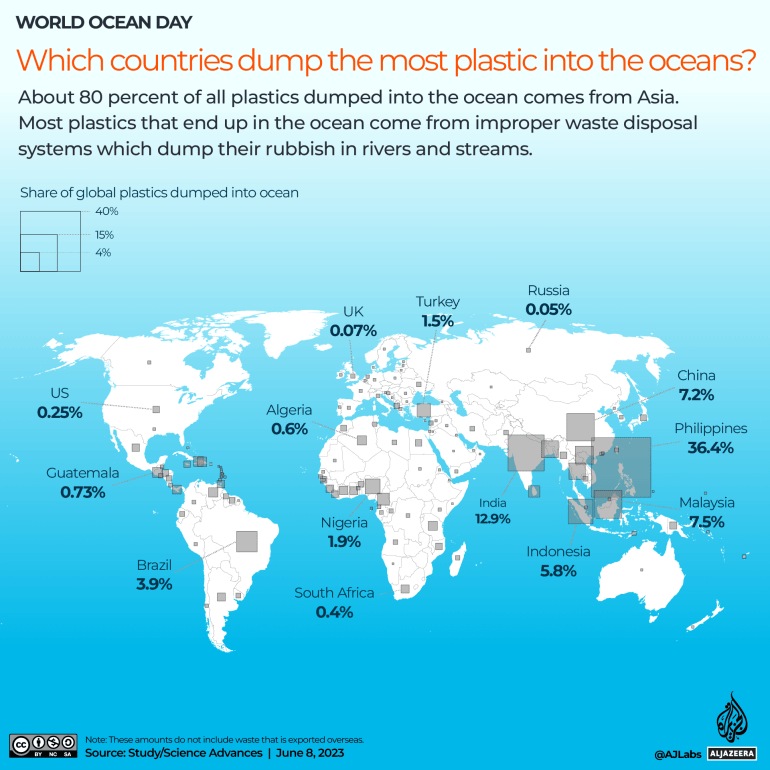
What makes plastics so dangerous for the environment?
Plastics are synthetic materials made from polymers, which are long chains of molecules. These polymers are typically derived from petroleum or natural gas.
The main problem with plastics is that they do not easily biodegrade, which means they can persist in the environment for hundreds of years, causing serious pollution problems.
Plastics that find their way into the ocean end up floating on the surface for a long time. Eventually, they sink to the bottom and get buried in the seafloor.
Plastics on the surface of the ocean represent 1 percent of the total plastics in the ocean. The other 99 percent are microplastic fragments far below the surface.
